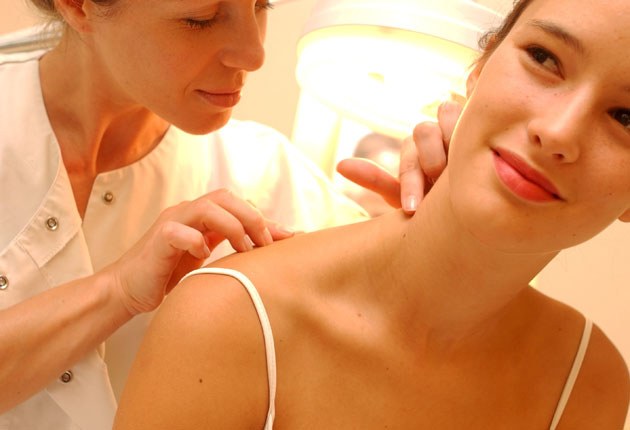Types of heat rash in adults
The heat rash in adults localized on large surfaces of skin on the face, neck, stomach, back, chest, knee and elbow folds, armpits. The disease is not contagious and poses no great danger. There are several types of heat rash in adults. Crystalline is characterized by the appearance of small pearly rash bubble diameter 1-2 mm. It is caused due to increased activity of the sweat glands, for example, through physical activity. This type of heat rash may be accompanied by mild itching. The disease resolves on its own within a few days. Some time in the place of the bubbles observed peeling of the skin.
Red rash accompanied by the appearance of nodules or bubbles in the area of redness. They emerge from them is serous fluid. Most often, rashes are localized in areas exposed to friction or pressure: the underarm area, skin folds, inguinal-scrotal area. There are soreness and itching.
Deep (papular) rash develops when frequent manifestations of red sweat. It is found in people living in areas with a hot climate. Constant wetting of the skin causes swelling of the epidermis and blockage of the excretory ducts of the sweat glands. The ducts become distended and can rupture. The skin blisters and flesh-colored papules (nodules) with bubbles in the center. Bubbles dry in their place are formed crust. In the case of severe disease of sweat glands are depleted, developing dry skin. On the background of a deep heat rash may develop infections, microbial eczema.
Causes of heat rash in adults
The main causes of heat rash in adults: chronic diseases of the cardiovascular, nervous, endocrine system, causing increased secretion of sweat; acclimatization in countries with a tropical climate; physical work, accompanied by excessive sweating. Prickly heat appears with a long stay under sun rays, excessive sweating during illness accompanied by fever, when wearing tight clothes clothes made of synthetic fabrics, excessive fullness.
Treatment of heat rash in adults
In uncomplicated forms of heat rash treatment is to remove precipitating factors. It is necessary to maintain an optimum microclimate in the room to wear clothes made of cotton and other natural materials, to observe the rules of personal hygiene. To eliminate sweating using talcum powder, powders for the skin. The sweat can be treated with the help of baths with the extracts of succession, chamomile, Hypericum, greater celandine.
In complicated forms of the disease it is advisable to use medicines on the basis of menthol and zinc. You can apply the cream "Calamine", "Bepanten". External funds should be applied to areas of the body with sweat several times a day. Can be prescribed ointments with antibacterial action ("Tetracycline", "Ichthyol", "Chloramphenicol").
